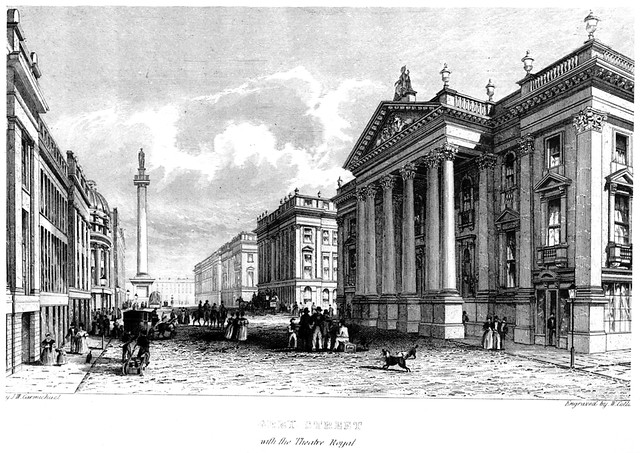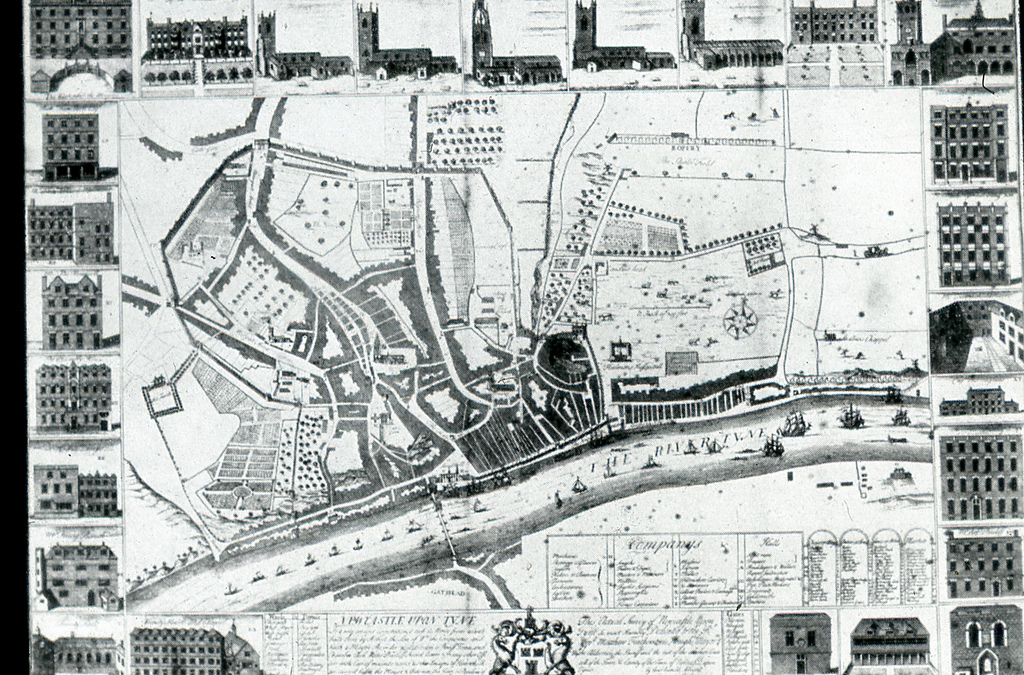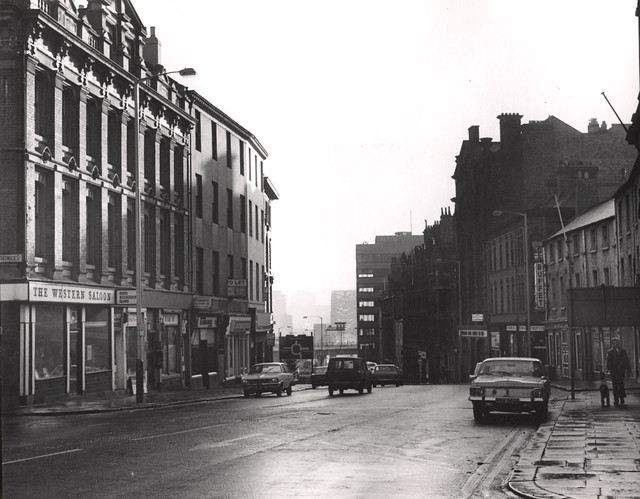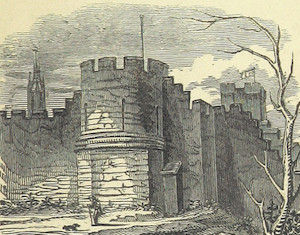Topics > Newcastle City Centre > Streets > Pilgrim Street > Anderson Place, Newcastle
Anderson Place, Newcastle
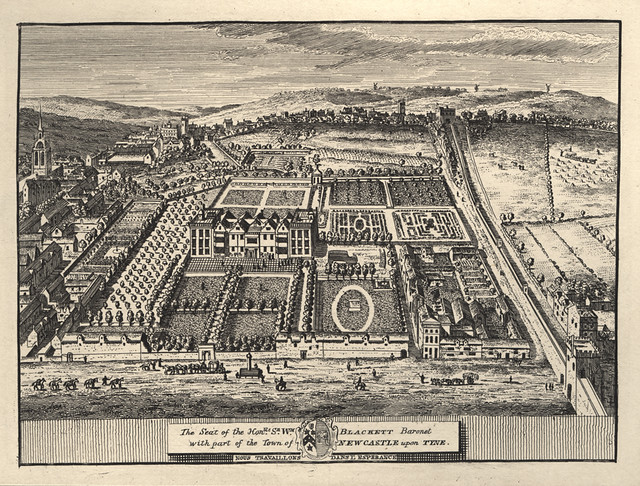 "Anderson Place was Newcastle's most spectacular house, the largest, it is said, in the country within a city wall. Originally the land belonged to the church but became the property of the merchant Robert Anderson in 1580. Robert Anderson built the "Newe House" on the site of the old monastery of the Grey Friars. In 1646 Charles I was kept prisoner here. The house was purchased in 1675 by Sir William Blackett, MP for Newcastle....The house stood just off Pilgrim Street, approximately on the site of the present Lloyds Bank, in a 13 acre estate. The house was demolished in 1834 when Richard Grainger rebuilt the city centre." (Tyne & Wear Sitelines)
"Anderson Place was Newcastle's most spectacular house, the largest, it is said, in the country within a city wall. Originally the land belonged to the church but became the property of the merchant Robert Anderson in 1580. Robert Anderson built the "Newe House" on the site of the old monastery of the Grey Friars. In 1646 Charles I was kept prisoner here. The house was purchased in 1675 by Sir William Blackett, MP for Newcastle....The house stood just off Pilgrim Street, approximately on the site of the present Lloyds Bank, in a 13 acre estate. The house was demolished in 1834 when Richard Grainger rebuilt the city centre." (Tyne & Wear Sitelines)
From: T Fordyce, J. Sykes. Local records; or, Historical register of remarkable events which have occurred in Northumberland and Durham, Newcastle-upon-Tyne, and Berwick-upon-Tweed..., published 1867.
On the right hand, on passing down this street, stands a noble mansion, which was built in 1580, by Robert Anderson, merchant, out of the offices, and nearly upon the scite of the Franciscan priory. In Speed's Map, 1610, it is called the "Newe House;" and it was selected for the head-quarters of General Leven, during the captivity of king Charles in Newcastle. Sir Francis Anderson, Knt. in 1675 conveyed it to Sir William Blackett, of Matfen, Bart. who added the two wings to it, without attempting to preserve the style and uniformity of the building. It came into the possession of Sir Walter Blackett, Bart. by his marriage with Sir William's grand-daughter. In 1782, it was sold to Mr. George Anderson, an opulent architect, whose son, Major Anderson, the present possessor, has very properly styled it Anderson Place, it having been, at two distant periods, in the possession of different families of the same name.
Grey very properly calls this a princely house; and Bourne says, "It is surrounded with a vast quantity of ground: that part of it which faces the street is thrown in walks and grass-plots, beautified with images, and beset with trees, which afford a very pleasing shade: the other part of the ground on the west side of it is all a garden, exceedingly neat and curious, adorned with many and the most beautiful sta tues, and several other curiosities." This grand and noble mansion was long concealed from the view of the passenger by a very large wooden gate; but the present spirited proprietor has substituted an ornamental iron one, which exposes the beauties of this agreeable place. A fine avenue shaded with trees leads direct to the house, and on each side of the grass-plot is a curved coach-way. The whole combines to produce a very fine effect. In the interior of this spacious mansion are some curious and well-painted ceilings. The apartments occupied by the royal captive are calculated to dispose the mind of the visitor to reflections the most melancholy and impressive.
Extract from Eneas Mackenzie, Historical Account of Newcastle-Upon-Tyne Including the Borough of Gateshead. Mackenzie and Dent, Newcastle-upon-Tyne, 1827.

from Newcastle libraries (flickr)
003390:Anderson Place Newcastle upon Tyne Unknown 1702
Pinned by Simon Cotterill
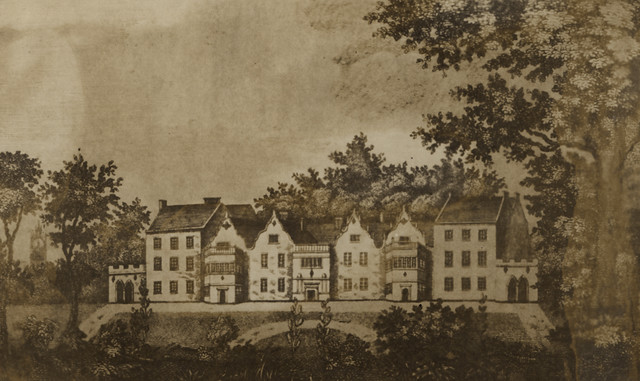
from Newcastle libraries (flickr)
010945:Anderson Place Residence of Major Anderson Newcastle upon Tyne Unknown c.1820
Pinned by Simon Cotterill
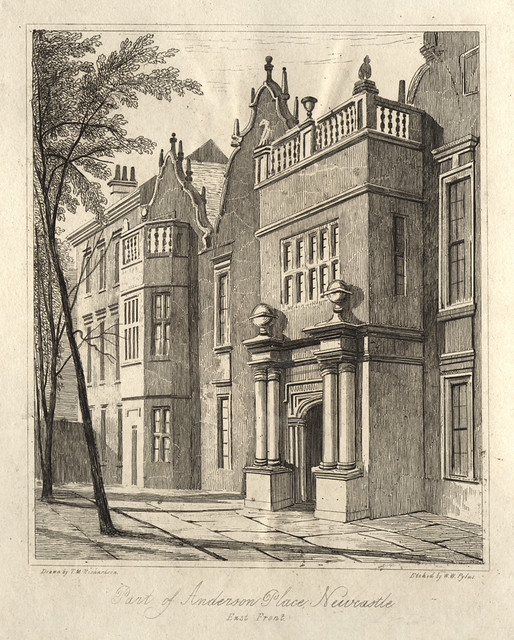
from Newcastle libraries (flickr)
006110:Anderson Place Newcastle upon Tyne Richardson T.M.
Pinned by Simon Cotterill
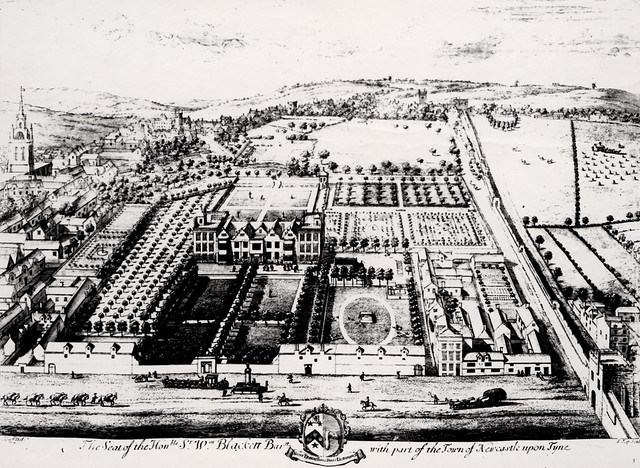
from Newcastle libraries (flickr)
030628:Newe House seat of Sir William Blackett Newcastle upon Tyne c.1760
Pinned by Simon Cotterill

from https://twsitelines.info/SMR/…
Tyne and Wear HER(4931): Newcastle, Anderson Place
- "Anderson Place was Newcastle's most spectacular house, the largest, it is said, in the country within a city wall. Originally the land belonged to the church but became the property …
Added by
Simon Cotterill

Co-Curate Page
Redevelopment of Newcastle 1824 to 1841
- In the mid 19th century the layout of the centre of Newcastle was redesigned and developed by Richard Grainger with the support of John Clayton (town clerk) and architects, notably …


from Newcastle libraries (flickr)
003390:Anderson Place Newcastle upon Tyne Unknown 1702
Pinned by Simon Cotterill

from Newcastle libraries (flickr)
010945:Anderson Place Residence of Major Anderson Newcastle upon Tyne Unknown c.1820
Pinned by Simon Cotterill

from Newcastle libraries (flickr)
006110:Anderson Place Newcastle upon Tyne Richardson T.M.
Pinned by Simon Cotterill

from Newcastle libraries (flickr)
030628:Newe House seat of Sir William Blackett Newcastle upon Tyne c.1760
Pinned by Simon Cotterill

from https://twsitelines.info/SMR/…
Tyne and Wear HER(4931): Newcastle, Anderson Place
- "Anderson Place was Newcastle's most spectacular house, the largest, it is said, in the country within a city wall. Originally the land belonged to the church but became the property …
Added by
Simon Cotterill

